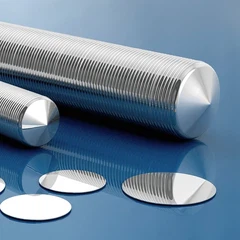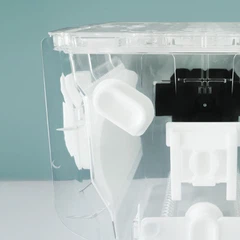Silicon (Si) is a core material in the semiconductor industry, and its processing technology is crucial to the development of microelectronics and microelectromechanical systems (MEMS). In the processing of silicon, etching technology is one of the key steps to achieve complex micro-nano structures. However, the etching rate of silicon is not uniform, but highly dependent on the orientation of the crystal (crystal direction). This crystal orientation dependence is a direct result of the differences in the arrangement density and chemical bond orientation of silicon atoms on different crystal planes. This article will discuss in detail the relationship between silicon etching rate and crystal orientation, and analyze its practical application in micro-nano processing.
Silicon crystal structure and crystal orientation
Silicon is a crystal with a diamond structure, and its atomic arrangement shows significant differences on different crystal planes. Common crystal planes include (100), (110) and (111) planes.

(100) Crystal plane: The atomic arrangement is relatively loose, and the chemical bonds are more exposed.
(110) Crystal plane: The atomic density is between (100) and (111).
(111) Crystal plane: The atomic arrangement is the most compact, and the chemical bonds are difficult to be attacked by the etchant.
The differences in atomic arrangement of these crystal planes directly affect the etching rate, making the etching behavior of different crystal planes show significant anisotropy.
Crystal orientation dependence in wet etching
Wet etching is one of the commonly used techniques in silicon processing, especially in anisotropic etching. Commonly used etchants include alkaline solutions such as KOH (potassium hydroxide) and TMAH (tetramethylammonium hydroxide). The etching rates of different crystal planes vary significantly:
(100) crystal plane: due to the loose arrangement of atoms, the etching rate is the fastest.
(110) crystal plane: the etching rate is faster, but slightly lower than the (100) plane.
(111) crystal plane: due to the close arrangement of atoms, the etching rate is the slowest
For example, in KOH solution, the etching rate ratio is usually (100):(110):(111) = 400:600:1. This anisotropic property enables wet etching to precisely control the structure morphology on silicon wafers.

Crystal orientation dependence in dry etching
Dry etching (such as plasma etching and deep reactive ion etching) usually exhibits stronger anisotropy, but its crystal orientation dependence is weaker. Dry etching mainly achieves material removal by combining physical bombardment and chemical reaction, so the influence of crystal orientation is mainly reflected in the control of sidewall morphology.
Key factors affecting silicon etching rate
In addition to crystal orientation, silicon etching rate is also affected by the following factors:
Temperature: Increasing temperature generally speeds up the etching reaction, but the ratio of etching rates for each crystal plane remains relatively stable.
Etchant concentration: High concentrations of etchants (such as KOH) can enhance anisotropy, while low concentrations may reduce selectivity.
Doping concentration: The etching rate of heavily doped silicon (such as p++ type) can be significantly reduced, and even electrochemical stopping can be achieved.













